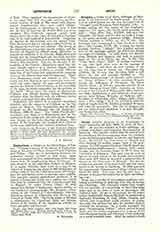

Zenobius, Saint, Bishop of Florence and one of the patrons of that city, b. there in the latter part of the reign of Constantine I; d. 337. Carefully educated by his pagan parents, he came early under the Gallery influence of the holy bishop Theodore, was baptized by him, and succeeded, after much opposition, in bringing his father and mother to the Christian Faith. He embraced the clerical state, and rapidly rose to the position of archdeacon, when his virtues and notable powers as a preacher made him known to St. Ambrose, at whose instance Pope Damasus (366-86) called him to Rome, and employed him in various important missions, including a legation to Constantinople. On the death of Damasus he returned to his native city, where he resumed his apostolic labors, and, on the death of the bishop of that see, Zenobius, to the great joy of the people, was appointed to succeed him. The ancient legends of his episcopal career—in which, however, there are many interpolations of a later date—are unanimous in their description of his saintly life and supernatural gifts. Extraordinary miracles, including several instances of the restoration of the dead to life, are attributed to him, and during his prolonged episcopate his fervor and zeal for souls never for a moment flagged. According to his biographer and successor in the See of Florence, Antoninus, he died in his ninetieth year, in 424; but, as Antoninus says that Innocent I (d. 417) was at the time pope, the date is uncertain. There is ground for believing that he actually died in 417, on May 25, on which day the ancient tower where he is supposed to have lived, near the Ponte Vecchio, is annually decorated with flowers. His body was first buried in the Basilica of St. Laurence (consecrated by St. Ambrose in 393), and was later translated to San Salvador‘s church, on the site of the present cathedral. Beneath the high altar is the silver shrine of the saint, designed by Ghiberti about 1440, in the same style as his famous bronze gates. There is a statue of Zenobius in San Marco, and other memorials of him in the city, where his name and memory are still venerated.
D. O. HUNTER-BLAIR

